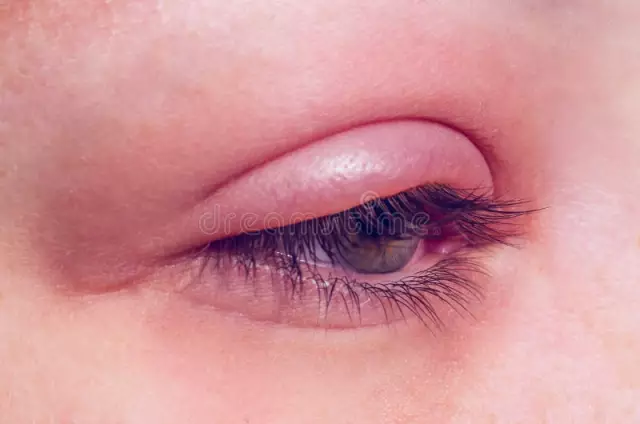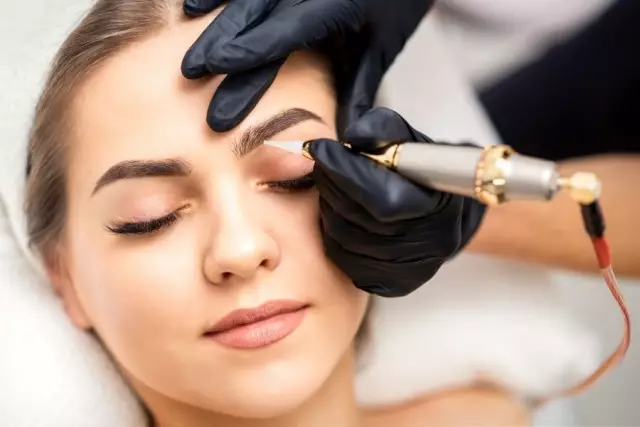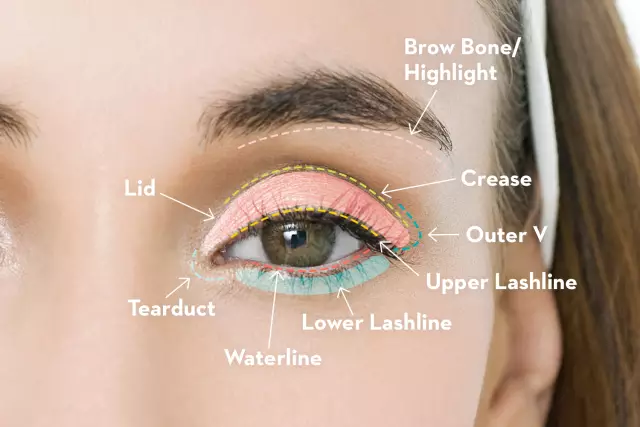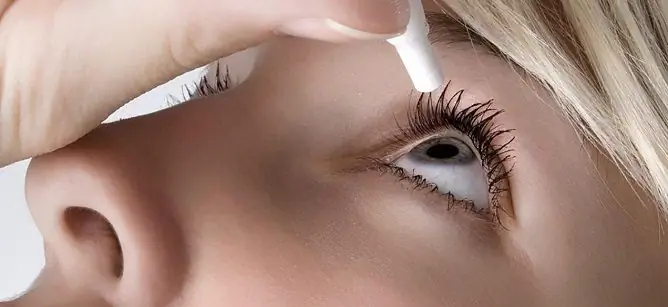- Author Rachel Wainwright [email protected].
- Public 2023-12-15 07:39.
- Last modified 2025-11-02 20:14.
Phenylephrine Optician
Phenylephrine optician: instructions for use and reviews
- 1. Release form and composition
- 2. Pharmacological properties
- 3. Indications for use
- 4. Contraindications
- 5. Method of application and dosage
- 6. Side effects
- 7. Overdose
- 8. Special instructions
- 9. Application during pregnancy and lactation
- 10. Use in childhood
- 11. Use in the elderly
- 12. Drug interactions
- 13. Analogs
- 14. Terms and conditions of storage
- 15. Terms of dispensing from pharmacies
- 16. Reviews
- 17. Price in pharmacies
Obsolete name: Visofrin
Latin name: Phenylephrine-optic
ATX code: S01FB01
Active ingredient: phenylephrine (Phenylephrine)
Manufacturer: CJSC "LEKKO" (Russia)
Description and photo update: 2020-05-03
Prices in pharmacies: from 199 rubles.
Buy

Phenylephrine optician is a drug for topical use in ophthalmology; α-adrenergic agonist.
Release form and composition
The drug is produced in the form of eye drops: a clear liquid, colorless or with a brown-yellow tint (5 or 10 ml each in a polymer dropper bottle with a screw neck, a dropper stopper or a dispensing nozzle, and a screw cap with a control ring for the first opening; c cardboard box 1 dropper bottle and instructions for use of Phenylephrine-optic).
1 ml of the preparation contains:
- active ingredients: phenylephrine hydrochloride - 25 mg;
- additional components: sodium disulfite - 3 mg; benzalkonium chloride (in terms of anhydrous substance) - 0.1 mg; sodium hydroxide - 0.24 mg; disodium edetate - 1 mg; sodium citrate dihydrate - 5 mg; citric acid monohydrate - 1 mg; purified water - up to 1 ml.
Pharmacological properties
Pharmacodynamics
Phenylephrine belongs to the group of α-adrenergic agonists and has a pronounced non-selective α-adrenomimetic effect. When used in therapeutic doses, it does not exhibit a significant stimulating effect on the central nervous system (CNS). In the case of topical application in ophthalmology, it provides dilation of the pupil, improvement of the outflow of intraocular fluid and narrowing of the vessels of the conjunctiva. On β-adrenergic receptors, including the heart, phenylephrine affects to a small extent. It does not have a positive inotropic and chronotropic effect.
Phenylephrine has a vasoconstrictor effect similar to that of norepinephrine (norepinephrine). The vasopressor effect of the active substance is weaker than that of norepinephrine, but more prolonged. The drug-induced vasoconstriction is observed 0.5-1.5 minutes after the introduction of the drops, its duration is 2-6 hours.
After instillation, the Phenylephrine optician leads to contraction of the dilator muscle of the pupil and, therefore, causes the expansion of the latter. After one instillation, mydriasis occurs within 10-60 minutes and is noted within 2 hours. Phenylephrine-induced dilatation of the pupil is not accompanied by cycloplegia.
Pharmacokinetics
Phenylephrine easily enters the tissues of the eye, in plasma its maximum concentration (C max) is noted 10-20 minutes after the introduction of drops into the conjunctival sac. Pre-instillation of local anesthetics increases systemic absorption of phenylephrine and may increase the duration of mydriasis.
The substance is excreted in the urine unchanged (less than 20%) or in the form of inactive metabolic products.
Indications for use
- iridocyclitis (in order to prevent the appearance of posterior synechiae and reduce exudation from the iris);
- red eye syndrome (to reduce irritation and redness of the membranes of the eye);
- diagnostic procedures, including ophthalmoscopy, performed to monitor the condition of the posterior segment of the eye (for the purpose of diagnostic pupil dilation);
- provocative test with a narrow anterior chamber angle profile and suspected angle-closure glaucoma;
- spasm of accommodation;
- differential diagnosis of injection (superficial and deep) of the eyeball.
Contraindications
Absolute:
- narrow-angle / closed-angle glaucoma;
- hepatic porphyria;
- hyperthyroidism;
- congenital deficiency of glucose-6-phosphate dehydrogenase;
- violation of tear production;
- rhinitis;
- tachycardia;
- arterial hypertension against the background of ischemic heart disease (CHD), aortic aneurysm, arrhythmias, atrioventricular (AV) blockade of I - III degree;
- severe cerebrovascular or cardiovascular pathologies;
- elderly age;
- prematurity;
- children under 6 years of age - in the treatment of accommodation spasm;
- hypersensitivity to the components of Phenylephrine-optic.
Relative (use the drug in the following cases should be under medical supervision):
- sickle cell anemia;
- diabetes mellitus, due to the aggravation of the risk of increased blood pressure (BP) caused by impaired autonomic regulation;
- the period after surgical interventions, due to the deterioration of healing due to conjunctival hypoxia;
- wearing contact lenses;
- use in combination with monoamine oxidase (MAO) inhibitors and for 3 weeks after the latter is canceled.
Phenylephrine optician, instructions for use: method and dosage
Phenylephrine-optic eye drops are applied topically by instillation.
When performing ophthalmoscopy, a single use of the drug is prescribed. Usually, to obtain mydriasis, it is sufficient to introduce 1 drop of the agent into the conjunctival sac. The maximum expansion of the pupil is achieved 15-30 minutes after instillation and lasts for 1-3 hours. If maintenance of mydriasis is required for an extended period, re-instillation of the agent is allowed after 1 hour.
In iridocyclitis, Phenylephrine-optic is used to weaken exudation into the anterior chamber of the eye, and to prevent the appearance and rupture of already existing posterior synechia. For these purposes, 2-3 times a day, 1 drop is injected into the conjunctival sac of the diseased eye (s).
When removing the spasm of accommodation in adults and children from 6 years of age, it is recommended to instill 1 drop in each eye at night for 4 weeks.
When carrying out diagnostic procedures, a single instillation of Phenylephrine-optic is used in the following cases:
- differential diagnosis of the type of injection of the eyeball: in the case when, 5 minutes after the injection of drops, a narrowing of the vessels of the eyeball is recorded, the injection is classified as superficial (conjunctival); if the redness of the eye persists, this indicates an expansion of the vessels that lie deeper, and requires a thorough examination for the possible presence of scleritis / iridocyclitis;
- provocative test in the presence of a narrow profile of the angle of the anterior chamber of the eye and existing suspicions of closed-angle glaucoma: in the case when the difference between the values of intraocular pressure before the introduction of Phenylephrine-optic and after reaching mydriasis varies from 3 to 5 mm Hg. Art., the results of this test are considered positive.
Side effects
The use of eye drops Phenylephrine-optic can cause the following negative side reactions from the organ of vision: periorbital edema, conjunctivitis; at the beginning of the introduction - a burning sensation; increased lacrimation, discomfort in the eye, blurred vision, eye irritation, increased intraocular pressure (IOP).
The next day after use, the development of reactive miosis is possible. With repeated instillations of the drug over a short period of time, less pronounced mydriasis may occur than previously noted. Most often, such a reaction is recorded in elderly patients.
As a result of a significant contraction of the pupil dilator caused by phenylephrine, 30-45 minutes after the introduction of drops in the moisture of the anterior chamber of the eye, pigment particles from the pigment layer of the iris can be observed. It is required to differentiate the suspension detected in the chamber moisture with the penetration of blood corpuscles into the chamber moisture or with the appearance of anterior uveitis.
Possible systemic reactions:
- skin and subcutaneous fat: contact dermatitis;
- cardiovascular system: increased blood pressure, tachycardia, palpitations, arrhythmias (including ventricular arrhythmias), occlusion of coronary arteries, reflex bradycardia, pulmonary embolism.
Overdose
Symptoms of a phenylephrine overdose include sweating, nervousness, anxiety, dizziness, palpitations, vomiting, and weak / shallow breathing.
It is recommended that in the event of a systemic effect of Phenylephrine-optician, stop negative manifestations by means of α-blockers, for example, phentolamine intravenously at a dose of 5-10 mg (if necessary, the injection can be repeated).
special instructions
The use of Phenylephrine-optic in doses higher than recommended in patients with injuries, lesions of the eye or its appendages, in the postoperative period or with reduced tear production (due to anesthesia) can lead to an increase in the absorption of phenylephrine and the occurrence of side systemic reactions.
Influence on the ability to drive vehicles and complex mechanisms
After instillation of Phenylephrine-optician due to changes in accommodation and pupil width, a decrease in visual acuity may occur. Until normal visual perception is restored, you should not drive a car, other complex moving mechanisms and take part in potentially hazardous types of work.
Application during pregnancy and lactation
Since pregnant women do not have sufficient experience in using Phenylephrine optics, it is allowed to use drops during gestation only as directed by a doctor, in the case when the potential benefit to the woman outweighs the possible threat to the fetus.
There is no data on the excretion of phenylephrine in breast milk, therefore, if it is necessary to treat with the drug during lactation, breastfeeding should be stopped.
Pediatric use
The use of drops is contraindicated for premature babies.
For the treatment of accommodation spasm, Phenylephrine-optic is used only in children over 6 years of age.
Use in the elderly
Prescribing Phenylephrine-optician to elderly patients is contraindicated.
Drug interactions
- propranolol, tricyclic antidepressants, guanethidine, m-anticholinergics, reserpine, methyldopa: vasopressor activity of α-adrenergic agonists is potentiated;
- atropine (topical application): the mydriatic action of phenylephrine increases; the risk of developing tachycardia is aggravated due to the increased vasopressor effect;
- drugs for inhalation anesthesia: their inhibitory effect on the cardiovascular system increases;
- MAO inhibitors: the threat of an uncontrolled rise in blood pressure is increasing; with combination therapy, as well as within 21 days after stopping the use of these drugs, phenylephrine must be used with extreme caution;
- antihypertensive drugs: the antihypertensive effect is weakened, blood pressure increases, the risk of tachycardia increases;
- other adrenomimetics and sympathomimetics: enhance the cardiovascular effects of phenylephrine.
Analogs
Analogs of Phenylephrine-optic are Irifrin, Neosinephrine-POS, Irifrin BK, Phenylephrine-SOLOpharm, Stelfrin Supra, etc.
Terms and conditions of storage
Store in its original packaging, out of the reach of children, at a temperature not exceeding 25 ° C.
Shelf life is 2 years.
After the first opening, the dropper bottle must be used no more than 1 month.
Terms of dispensing from pharmacies
Dispensed by prescription.
Reviews of Phenylephrine-optician
Most of the reviews about Phenylephrine-optic are positive. Patients consider the drug to be an effective means of achieving mydriasis, increasing the narrowing of the conjunctival vessels and the outflow of intraocular fluid, relieving irritation and redness of the eyes. Additional advantages include an affordable price (in comparison with foreign counterparts) and a convenient dispenser.
However, many patients also note the occurrence of short-term discomfort and severe burning after instillation of the drug. Sometimes there are complaints about the extremely weak effect of drops and their absence in the pharmacy network.
Price for Phenylephrine optician in pharmacies
The price of Phenylephrine-optic in the form of eye drops 2.5% can be 260-300 rubles. for a dropper bottle, 5 ml.
Phenylephrine optician: prices in online pharmacies
|
Drug name Price Pharmacy |
|
Phenylephrine-optic 2.5% eye drops 5 ml 1 pc. 199 RUB Buy |

Anna Kozlova Medical journalist About the author
Education: Rostov State Medical University, specialty "General Medicine".
Information about the drug is generalized, provided for informational purposes only and does not replace the official instructions. Self-medication is hazardous to health!






